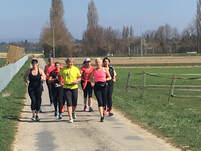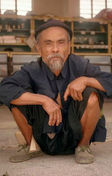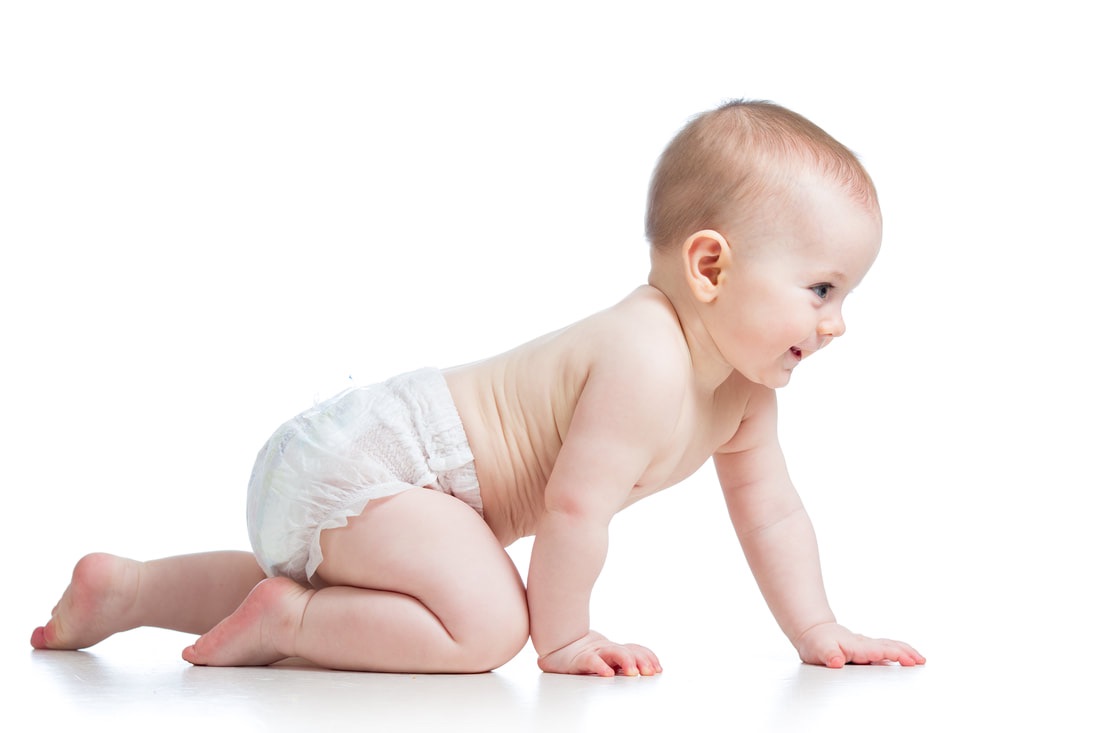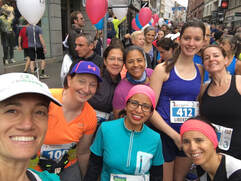 It’s the first day of January, and after the excesses of the festive season, I am intrigued by an e mail that lands in my inbox entitled ‘Run your 1st half marathon in 2019’. As the training program promises to be ‘perfect for beginners’, I nervously take the plunge and register, reassuring myself that I can always bottle out before the ‘Big Day’ – the 21.1km Dreiländer half marathon scheduled to take place in May. The first activity on the program is a workshop on ChiRunning, a technique developed for more efficient and injury-free running. At a weekend in mid-January a group of diverse women scuttle into a gym hall to get out of the cold, ready to start the adventure we signed up for. We all live in or around Basel, range in age from 40s to 60s and are a pretty international bunch – from America, England, Holland, Ireland, India, Mexico, Peru, Spain, and Switzerland, with English as our common language. We start the workshop by hastily introducing ourselves and our reasons for being there, which range from ‘I always have so many excuses and this will force me to exercise’ to ‘my husband thought it was a good idea’. The workshop leader - to become our coach over the next 4 months - demonstrates the technique of ChiRunning, which promises to make running less effort and more enjoyable. It is based on the principle of improving efficiency by allowing gravity to assist forward propulsion, taking the workload off our legs and letting us run lightly and swiftly as we did when we were young. In late January our group of 12 women embark on the training in earnest, equipped with a metronome to encourage us to run at 180 steps per minute (the most efficient cadence) and a WhatsApp group to connect with each other. We are all fairly confident people, but our minds are ringing with doubts. Can we really do it? For most of us, this is about more than a race. It is a chance to prove to ourselves and our families that we can do anything once we set our mind to it with hard work and perseverance. The program, provided to us by our coach via an online platform - which provides her with feedback on what we have and haven’t done, doesn’t look too daunting at the start, involving two runs of around 5-7 km in the week and some core strengthening exercises to complete on our own, with a longer run as a group each weekend. Each Saturday morning, the rolling countryside around Oberwil (BL) witnesses us women catching up on gossip, talking through problems and enjoying each other and dogs for company while trotting along at whatever speed suits us. However long it takes we run as a group, with the faster runners always waiting for the slower ones. The distances gradually get longer and by mid-February we are amazed that we are can run for more than an hour (albeit slowly) with relative ease - there does seem to be something about this ChiRunning technique… By end of March we are up to a 16km Saturday run and still smiling. Mid-April sees us up to 18km where many of us struggle and we begin to doubt ourselves and wonder if we will ever really be able to make it. Our coach clearly believes in us and is very motivating, and by end of April we manage to run the 21km distance on our Saturday group run – so we know we can do it! In early May we take part as a group in the Basel Frauenlauf, a 10km race around the historic city of Basel-Stadt. We all make it back safe and sound and are feeling fairly positive as our training slowly winds down before the ‘Big Day’. On Sunday May 19 we put on our start numbers and line up in the historic Basel Marktplatz to begin the Dreiländer half marathon, with a wonderful route that passes through Switzerland, France and Germany. We are all rather nervous, but our super coach encourages us and group members provide support for each other. 21.1km later and 4 months after our journey began, we are still smiling as we all finish our first half marathon and are proud to receive our medals. We cannot really believe that we just ran that far! This is a story of one ordinary Sunday that turned into another extraordinary one, where we achieved what we thought was impossible whilst still having fun and developing friendships along the way. What were the factors that made it possible - there were so many barriers to overcome when we started running, not just physical ones but mental ones too? We believe it is down to two key factors, a great coach and the power of a group. Our fabulous coach guided, supported, taught, encouraged and believed in us when we faltered. And running as a group made all the hurdles so much easier to jump over - chatting to a running buddy or sharing a problem often led to a reassuring, 'Oh, I get that too' and a useful list of tips on how to solve it. When our confidence and self-esteem was lacking then camaraderie and companionship swept us along. And we pushed each other without knowing it. It was of course not all easy and was not without its setbacks. Two of our lovely group had to drop-out because of pre-existing injuries. Not an easy decision to take but it’s the journey that matters and not the end. We had an amazing journey and enjoyed it so much we plan to repeat it in time for the Luzern half marathon at the end of October! If you are interested in more information on learning to run effortlessly and on joining a group to train for a 5km, 10km or half marathon - we would thoroughly recommend taking a look at our wonderful coach’s website www.runwithconstanza.com.
37 Comments
MOving is the key As soon as we think about being healthy and fit we think about sports, strength training, workouts, sweating and making an effort. Many times we torture our bodies to reach what we think is health and fitness. The key to a healthy productive mobile life is very simple. Just move. It is not the lack of exercise or the lack of training that makes you unfit, it is the lack of movement. Simple movement, walking, sitting and standing, squatting, jumping, running, etc. The average American sits for 13 hs a day. Europeans slightly less. Do you know what would happen to you body if you had to sit on the floor for 13 hs? We sit on chairs or couches. There is nothing inherently wrong with sitting. It is just that when sitting we don't move. Even if you get one of those fancy office tables that allow you to work standing up... they have not really made people healthier: You are still not moving if you are standing up by your desk. I recently read that you should do 20 squats for every hour you are sitting. Squatting is one of the most important movements we can do. If we did not have toilets we would be squatting at least once a day if you are a man and several more times if you are a woman. Squatting is the best position to give birth. In many parts of the world it is still the way people sit while cooking, eating or just resting. To reclaim the health and strength of our bodies it is not enough to hit the gym for 1hr every day after being sitting down for 12hs! Move Move Move. Why Crawl? Crawling is one of the first distance locomotion we develop as babies, right after sitting and a few months after we discover that rolling is how we can initially move from A to B. Crawling activates your reflexive core strength. This strength that develops without having to think about it. This strength is what we start using as soon as we come into this world. First to to move our head, then to roll, to rock, to crawl and finally to walk. Crawling connects your upper body with your lower body so they can work together, it establishes the contralateral movement of your limbs and develops your gait pattern, it stabilizes your pelvis and ultimately allow upright locomotion. We live in a world that has made it really easy to go about without using the whole potential of movement we are born with. We sit in chairs for too long, we have rearview cameras in our cars, we are isolated with shoes from the earth that supports us most of our days, etc. Our body is so efficient that any muscle we don’t use, any neuronal pathway that is redundant, we lose. Losing this connections means that other muscles have to compensate for this loss and that is how we get injured and develop moving pain. Start crawling and restore your @originalstrength. How do you crawl? Get down on your all 4s, lift your head and look where you are going and go. You can make it more challenging by lifting your knees off the floor (but just 1 inch). Your shoulders should be always higher than your hips. |
AuthorLets move the way we were designed to! Archives
June 2019
Categories |


 RSS Feed
RSS Feed